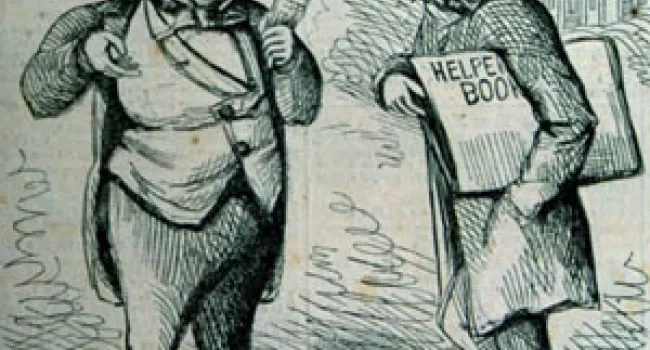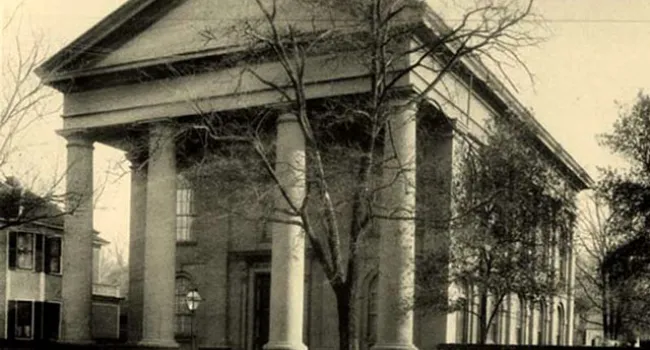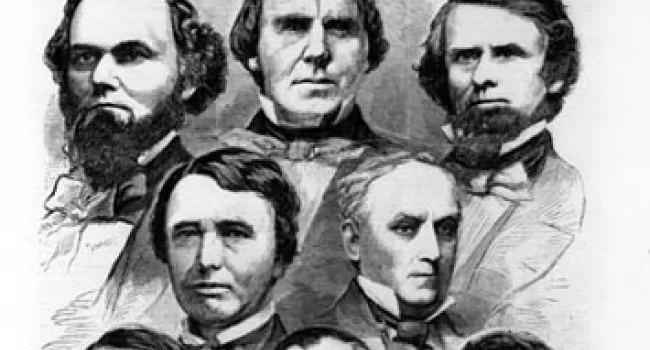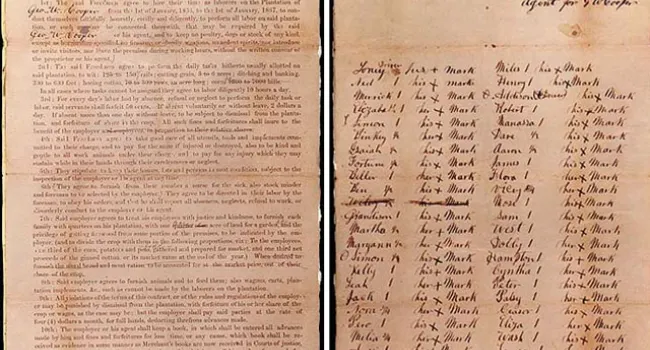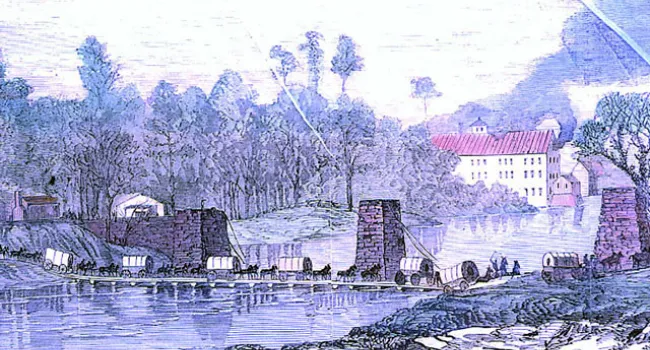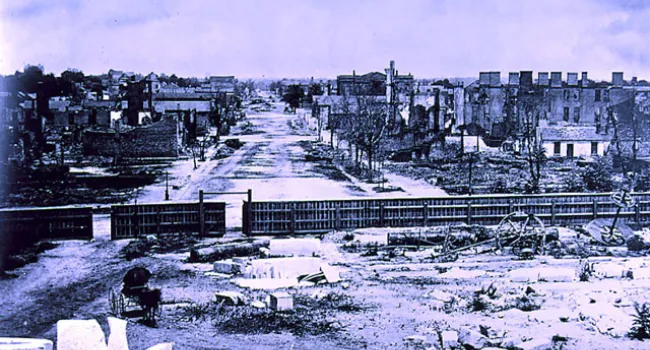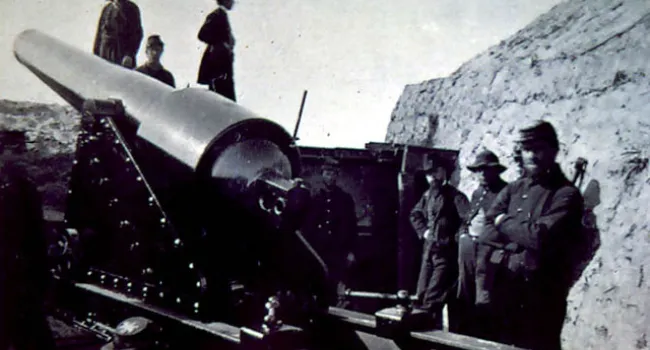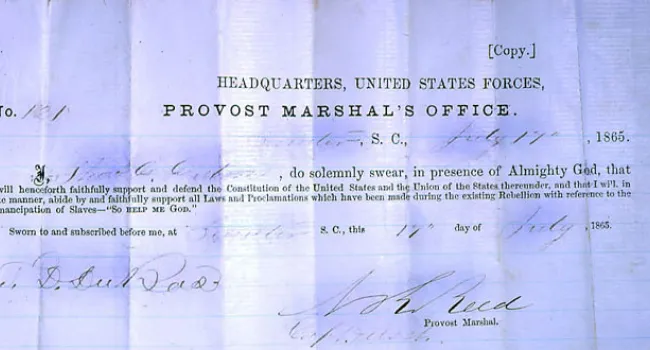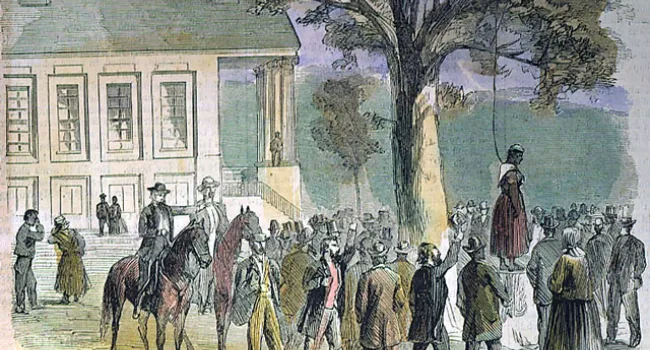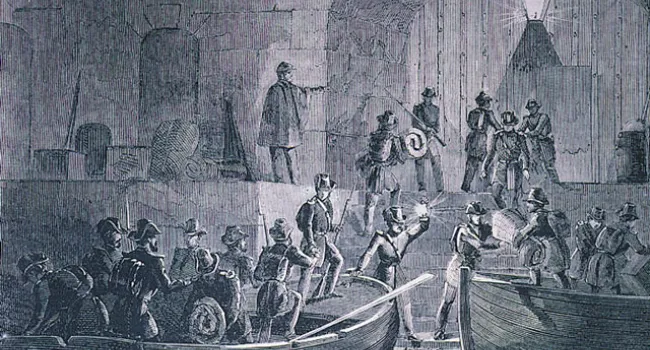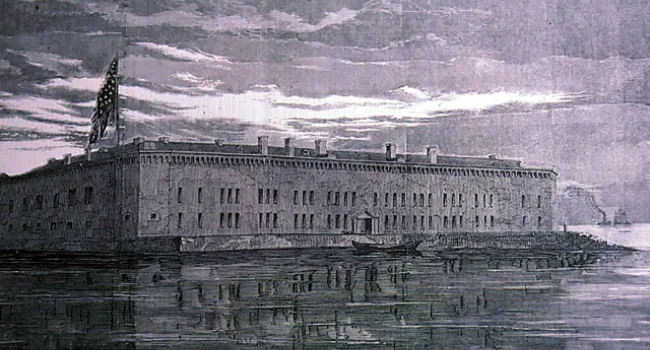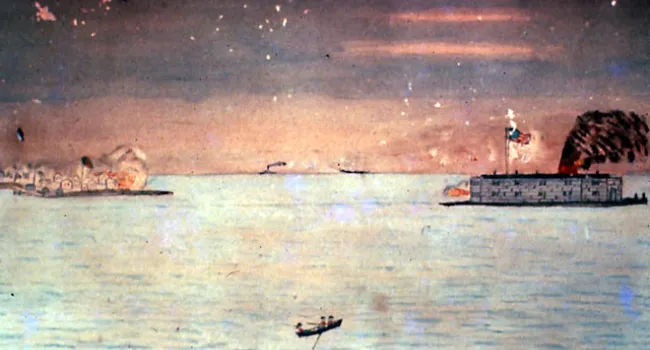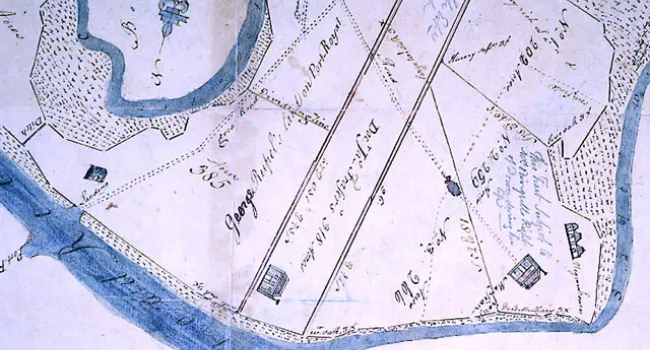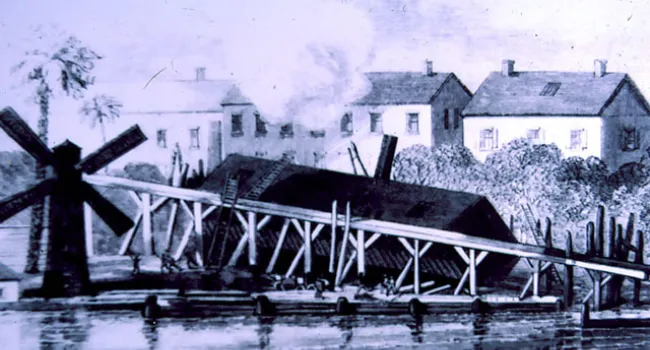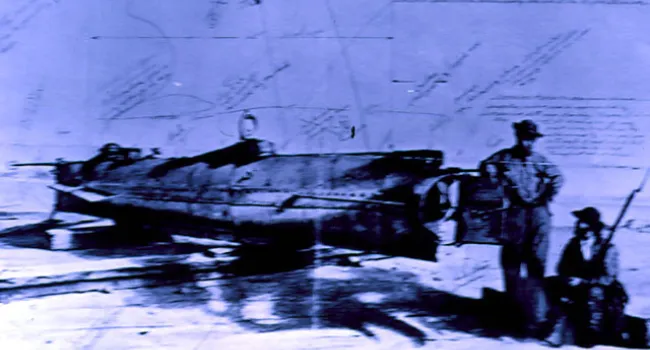
The occupation of the Beaufort area enabled many slaves to flee their masters. In the chaos of war and occupation, many brought with them household goods, furniture, and clothing from the homes their masters had abandoned in the face of the advancing Union forces. "Harper's Weekly" labeled this sketch, published in late 1861, "Negroes escaping from Beaufort with plunder from abandoned residences of their masters, stopped by U.S. gunboat 'Seneca'." The status of these men and women remained unclear until the Emancipation Proclamation declared them to be free. Known as "contrabands," they sought protection from the federal troops, and became a source of labor for harvesting cotton. On Hilton Head, they became recruits for the First Regiment of South Carolina Volunteers.
Courtesy of the South Caroliniana Library.
Standards
- This indicator was developed to encourage inquiry into the continuities and changes experienced by Americans of various genders, positions, races, and social status during the Civil War.
- 8.3.E Utilize a variety of primary and secondary sources to analyze multiple perspectives on the effects of the Civil War within South Carolina and the United States.


